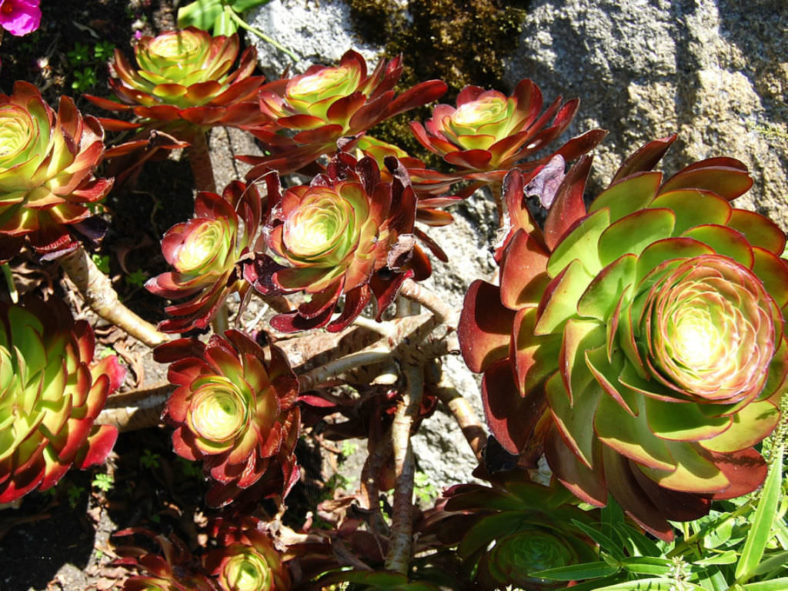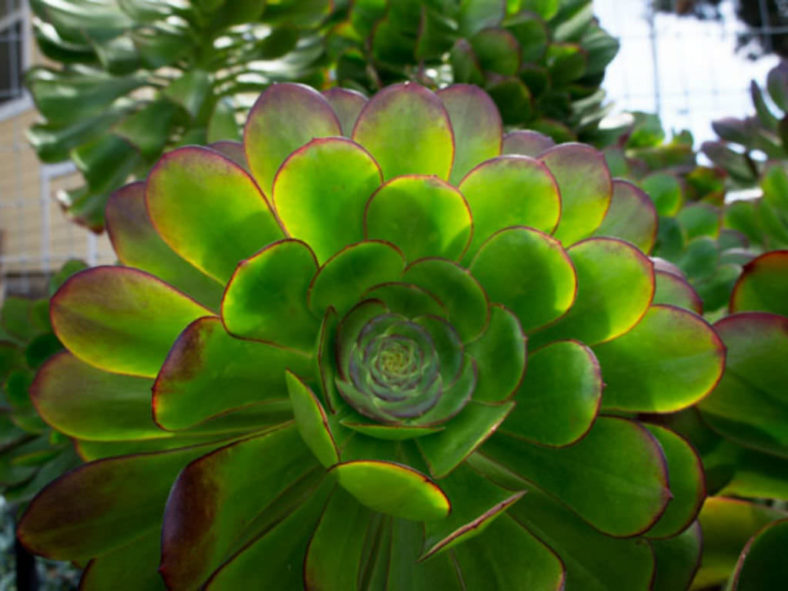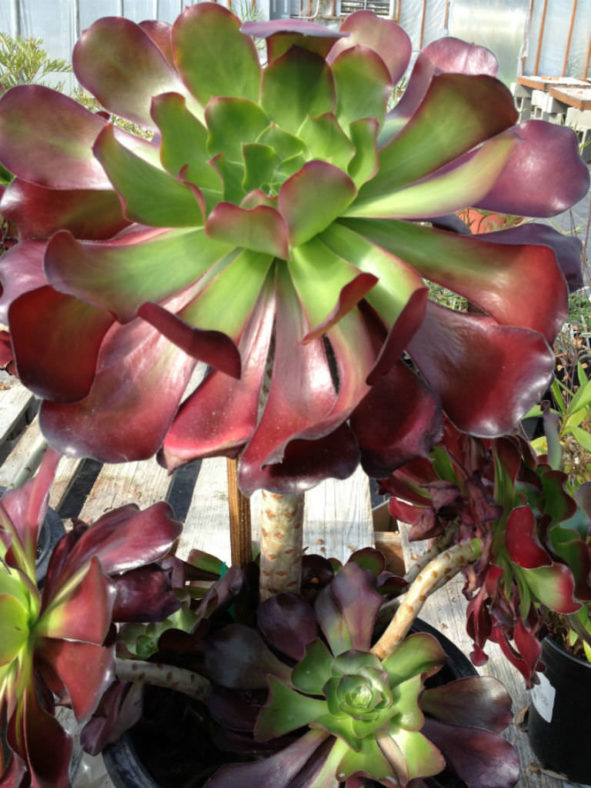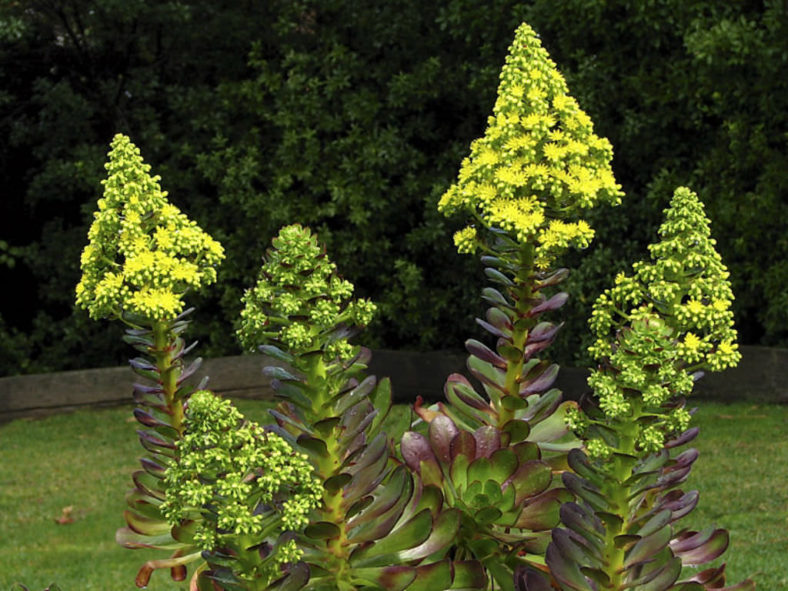Scientific Name
Aeonium 'Cyclops'
Common Name(s)
Giant Red Aeonium
Scientific Classification
Family: Crassulaceae
Subfamily: Sempervivoideae
Tribe: Aeonieae
Genus: Aeonium
Origin
Aeonium 'Cyclops' is a hybrid created by the southern California horticulturist Jack Catlin. It is a sibling of Aeonium 'Voodoo' and results from a cross between Aeonium undulatum and Aeonium arboreum 'Zwartkop'.
Description
Aeonium 'Cyclops' is a beautiful succulent subshrub that forms large rosettes of dark reddish-bronze to dark purplish leaves at the end of the branches. It can grow up to 4 feet (1.2 m) tall, while the rosettes can reach a diameter of 12 inches (30 cm). The leaves emerge green, giving the rosettes a "green eye."
From late winter through early spring, the mature rosettes produce a flower stalk with a large conical cluster of yellow star-shaped flowers at the end of the stalk.

Hardiness
USDA hardiness zones 9b to 11b: from 25°F (-3.9°C) to 50°F (10°C).
How to Grow and Care
Aeoniums do not like hot or dry weather. In summer, they may go dormant and do not require any water except in arid conditions. In extreme heat, their leaves will curl to prevent excessive water loss. Growing them in moist shade will keep them growing, but their true growth season is winter to spring when temperatures are cool, 65°F to 75°F (18°C to 24°C), and damp. In the winter, water the soil whenever it has dried out. Test by poking your finger down into the soil an inch or two (2.5 to 5 cm). Excessive moisture or leaving them in wet soil will cause root rot.
A sandy loam or regular potting mix is better than a mix specifically designed for cacti and succulents, as Aeoniums require some moisture. If you grow them in containers, repot them with fresh potting soil every 2 to 3 years.
Feed during the growing season with a half-strength balanced fertilizer every month or so. Do not feed while dormant.
See more at How to Grow and Care for Aeonium.
Links
- Back to genus Aeonium
- Succupedia: Browse succulents by Scientific Name, Common Name, Genus, Family, USDA Hardiness Zone, Origin, or cacti by Genus
Photo Gallery
Click on a photo to see a larger version.


